 Weird Stuff
Weird Stuff  Weird Stuff
Weird Stuff  Mysteries
Mysteries 10 Tragic Disappearances and Deaths in Joshua Tree National Park
 History
History 10 Ways Childhood Really Sucked in the Old West
 Music
Music 10 Name Origins of Famous Bands from the 1990s
 Religion
Religion 10 Biggest Turnarounds by the Catholic Church
 Weird Stuff
Weird Stuff 10 Unbelievable Times Laws Had Unintended Consequences
 Humans
Humans Ten Historic Women Who Deserve Way More Credit Than They Got
 Movies and TV
Movies and TV 10 Films That Spawned Major Lawsuits
 History
History Ten Times Towns Were Wiped Off the Face of the Earth
 Creepy
Creepy 10 of the Most Disturbingly Haunted Public Houses in the UK
 Weird Stuff
Weird Stuff 10 Niche Subcultures That Are More Popular Than You Might Think
 Mysteries
Mysteries 10 Tragic Disappearances and Deaths in Joshua Tree National Park
 History
History 10 Ways Childhood Really Sucked in the Old West
Who's Behind Listverse?

Jamie Frater
Head Editor
Jamie founded Listverse due to an insatiable desire to share fascinating, obscure, and bizarre facts. He has been a guest speaker on numerous national radio and television stations and is a five time published author.
More About Us Music
Music 10 Name Origins of Famous Bands from the 1990s
 Religion
Religion 10 Biggest Turnarounds by the Catholic Church
 Weird Stuff
Weird Stuff 10 Unbelievable Times Laws Had Unintended Consequences
 Humans
Humans Ten Historic Women Who Deserve Way More Credit Than They Got
 Movies and TV
Movies and TV 10 Films That Spawned Major Lawsuits
 History
History Ten Times Towns Were Wiped Off the Face of the Earth
 Creepy
Creepy 10 of the Most Disturbingly Haunted Public Houses in the UK
10 Civilizations That Mysteriously Vanished
Gone, without a trace. Mass disappearances are a very real and bizarre thing in which large numbers of people suddenly disappear without a trace, for seemingly no reason. Sometimes, an airplane full of passengers flies off into the night, never to be seen again, or a ghost ship turns up floating around in the water with absolutely no sign of its crew. Even these chilling instances, however, are small-time compared to the vanishing of an entire society.
Entire civilizations, cities, and empires have faded away, and today’s archaeologists and researchers often try to retrace their inhabitants’ steps and reconstruct what exactly happened to see if we can find a cause, and more importantly, a way to prevent it from happening to our cultures today. Interestingly, some of the cultures on this list were several hundred thousand people strong before they seemingly disappeared without a trace. Here are ten civilizations that just up and vanished mysteriously.
10 Nabateans
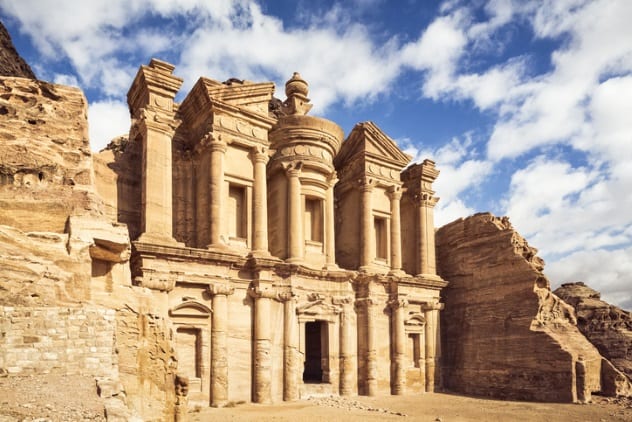
Semites are people who belong to a particular ancient language group, which includes Arabs, Akaadians, Hebrews, and more, and one of those groups was the Nabatean culture, which existed since at least 312 BC, as they are mentioned as having been attacked by the Macedonians.[1] This ancient and seemingly forgotten kingdom spanned the territories of Syria, Arabia, and Palestine at one point, becoming rather massive. Nabatean writing would eventually develop over the centuries to become modern-day Arabic, and it wasn’t until recently that we were able to retrace its evolution.
They established vast trade routes and commerce and became an extremely technologically advanced civilization for the day, with vast water systems which helped them survive the arid climate of Arabia. They left us massive structures which aligned with celestial bodies as other ancient cultures did, proof of an engineering genius among these people. Toward the end of their history, they were strong allies with the mighty Roman Empire, though Emperor Trajan did annex the kingdom from AD 105 to 106. We really don’t hear about the Nabateans much after that era.
9 Clovis People
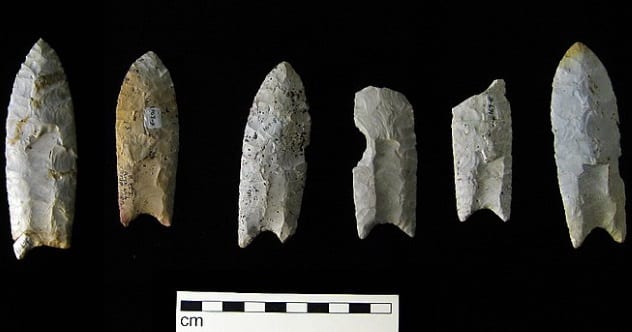
Anyone who’s ever been to the deserts of New Mexico might wonder how or why any civilization would live there before the advent of air conditioning. But this area, as well as an expansive land within the Americas, was the territory of one of the earliest American civilizations, the Clovis people, who are named after the modern-day city of Clovis, New Mexico.
A rare and important archaeological discovery was made here, namely many sharp objects and weapons, obsidian, bone tools, and hammers, which were highly sophisticated for their time, 9050 to 8800 BC based on 21st-century estimates. These same tools and designs have been found across a good chunk of North America, meaning this group was particularly widespread. Nevertheless, they eventually just totally disappeared.
It has been hypothesized that their massive size forced them, much like Rome, to branch out into smaller groups which eventually evolved into distinct peoples in different places, making them the forerunners to many other Native American cultures. That notion is supported by the fact that genetic links to the Clovis have even been found in the remains of ancient South American people.[2] Others have speculated that they relied heavily on hunting the mammoth, which became extinct, or even that the southwestern part of the United States was hit by a comet that wiped them out.
8 Catalhoyuk
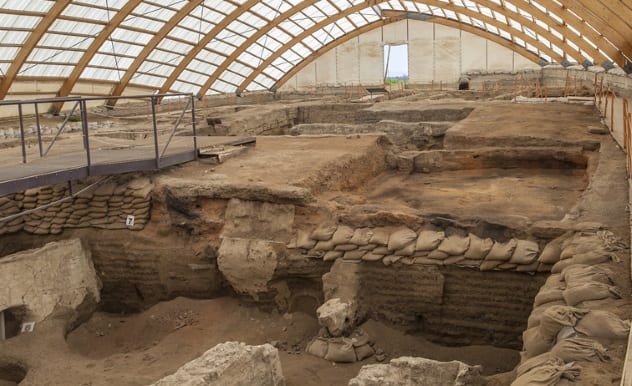
The inhabitants of Catalhoyuk were a very old Neolithic civilization who also disappeared into thin air, as far as we can tell. They lived in modern-day Turkey from 7500 to 5700 BC in mud-brick housing not unlike that of other extremely early civilizations. This particular group was extremely artistic with their religion, painting massive murals and erecting large shrines of dedication that astonish art buffs today. They lived extensively on grain and other crops for sustenance.
Researchers are continuing to unearth new facts about this group every day, so perhaps we will soon know exactly what happened to them, but as of now, we just have the empty shells of the marvelous buildings and unique homes sitting seemingly abandoned. A large part of the mystery of their disappearance is simply them being lost to time. All we have to go on is the physical evidence itself, without literary references. Digs have turned up skeletons beneath the floor of one building, of all places, suggesting they may have used it for some rather devout religious purposes, but right now, we don’t really know.[3]
7 Rapa Nui
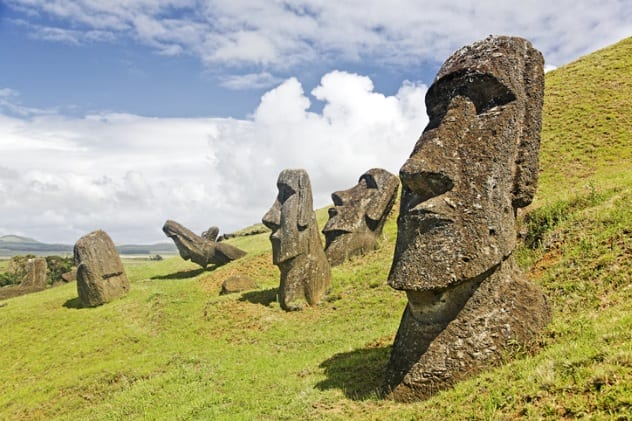
Arguably the most famous of disappearing cultures, the Rapa Nui people were the original inhabitants of Easter Island, leaving us the famed statues that we’ve probably all seen. The Polynesian people inhabited the island, which now belongs to Chile, though it’s 3,500 kilometers (2,200 mi) away from the country. Due to its absolute remoteness, how the original Rapa Nui arrived there is as much of a mystery as why they vanished.
So, why did they disappear? Starvation due to excessive resource consumption has been blamed. Destruction of Easter Island’s ecosystem by rats has also been fingered as the culprit. It’s also believed that the Rapa Nui traveled to another remote island, itself thousands of miles away, to start a new settlement. (Descendants of the Rapa Nui of Easter Island live in Chile today.) The truth might well be a combination of the many proposed explanations.[4]
6 Minoans
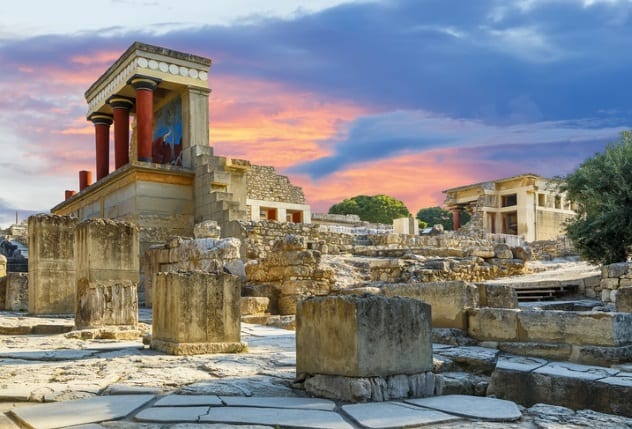
Hailing from the Greek island of Crete, the Minoans were an old Bronze Age civilization that existed from between 3000 and 1000 BC, long before the Golden Age of Athens and Alexander the Great. The Minoans were patently a Greek culture and the forerunners of the ancient Greece that’s most famous in our history books today, and they were also a very pagan culture, practicing animal sacrifices, burning offerings, having many nuanced cults, and holding wild, orgiastic festivals of song and dance.
The ancient Egyptians mention them in hieroglyphics, which means the Minoans definitely got around in the ancient world, and they had high-quality technologies and impressive arts for the day—but then they declined and disappeared.[5] Theories have suggested that they were decimated by a volcanic eruption in the Santorini islands near Crete, which must have ravaged the coasts of Crete with waves, ash, raining stone, and more. Herodotus, the famous Greek historian, writes that they were brought down by plagues and diseases, but there simply is no way to tell, as Herodotus wrote many centuries after the peoples of this island had disappeared.
5 Cucuteni-Trypillian Culture
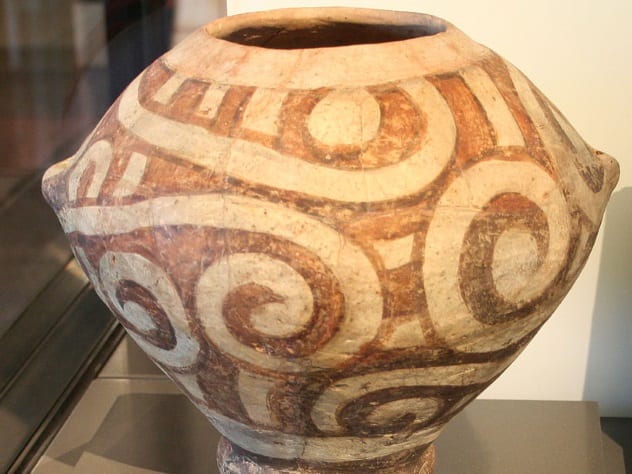
Between roughly 5400 and 2700 BC, a society known as the Cucuteni-Trypillian culture lived in the areas of what is modern-day Moldova, Romania, and Ukraine in the Carpathian Mountains. Strangely, this group also disappeared off of the face of the Earth. They were an early civilization that relied heavily on agriculture and close proximity to water supplies, building houses and settling as humans of the period were largely just beginning to do. They had an extremely in-depth religion and were proficient in many arts, including sculpting, pottery, and much more.
Before its strange disappearance under unusual circumstances, this massive culture spanned an impressive 350,000 square kilometers (135,000 mi2) and practiced a rather bizarre way of life, even for the time. The social order was such that the people inhabited very densely populated settlements, which they would burn to the ground or otherwise completely abandon and rebuild every 60 to 80 years.[6] Some have theorized that this was how they honored their dead, in a sort of mass crematory funeral.
4 Anasazi
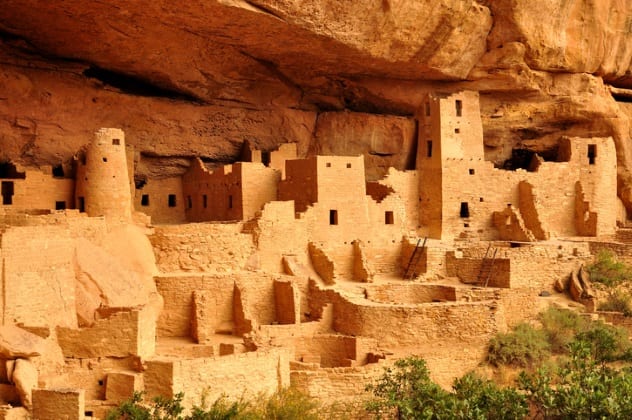
The Anasazi culture of the North American Southwest left behind many structures and artifacts for us to find before they ultimately disappeared. Maybe it was the brutal climate of the Southwestern heartland or the changing of that climate which made conditions uninhabitable, namely where access to water is concerned, but this is one group of people who also disappeared.[7]
Massive structures built into the cliffsides were left totally abandoned and were found in relatively pristine condition. These housing structures were perfect for fending off intruders, as they were often multiple stories high with windows for the entrance via ladders. When war would break out, the Anasazi could climb into their structures, raise the ladders, and be several stories above the invading tribes and could fire down on their enemies with impunity.
Many Native American tribes as well as some scholars claim that the Anasazi never actually disappeared; they just reached the critical mass of size that a society can become before it inevitably breaks off into smaller factions and becomes new groups of people—much like ancient Rome. They believe that certain tribes today which survive are the direct descendants of the Anasazi people.
3 Nabta Playa

The ancient people of Nabta Playa, in the southern part of modern-day Egypt, were a Neolithic group which existed in the area from roughly 11,000 to 6,000 years ago and were largely nomadic, as was common for that area at the time. The climate of the Nabta Playa basin was one of feast or famine, where seasonal shifts provided an abundance of water at some points during the year and then a complete drought at others. Eventually, the people settled down and inhabited the area as a civilization.
Changes in the climate have rendered the area almost entirely dry sand at this point, which also preserved what the people here left behind before they disappeared, such as a stone circle. The stone circle roughly aligns with the stars in many different ways and became a haven for sacrifice to the gods, with animal remains being found in vast underground caverns.[8] Like those who built Stonehenge, the people who lived there eventually declined and then wholly disappeared.
2 Khmer Empire

Over the long timeline of history, the Khmer Empire is one of the more recent disappearances to take place. The empire existed from AD 802 to 1431 in Southeast Asia, spanning the modern-day countries of Thailand, Cambodia, Laos, and Vietnam, and was a mixed culture of Buddhists and Hindus that came about through centuries of warfare. The Khmer Empire built some of the most astonishing temples and monuments in Southeast Asia today, many of which are in near-perfect condition.
But like the others on this list, the Khmer Empire, too, declined and disappeared. Some have noted that the migration of the Thai people may have slowly overtook the Khmer people, much like the Germanic tribes slowly infiltrating the western half of the Roman Empire over time. Others have blamed the constant war that the Khmer lived with daily, but they were never wholly overtaken. Still others have pointed to possible changes in weather conditions which altered their access to rainwater, causing a mass migration. Theories run the gamut as to why they fell, but no one really knows for sure.[9]
1 Olmecs
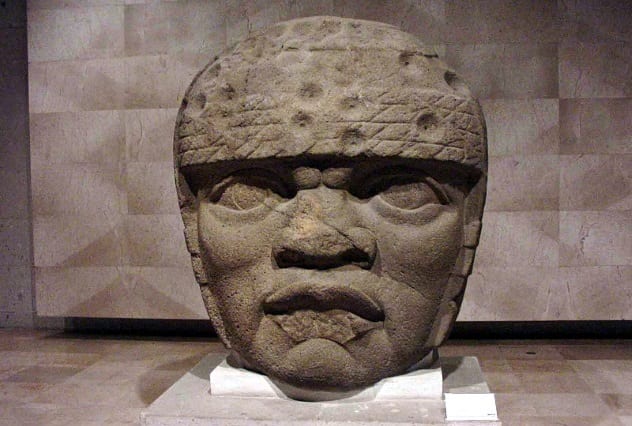
The Olmecs were the first large Mesoamerican civilization, and their culture was as rich as it was bizarre and unusual. They left us many standing structures and statues which exist today, and their prominence lasted from 1200 to 400 BC, with a society based on sacred religious practices for which they built pyramid-like temples. Much like the Polynesian people of Easter Island, they also carved massive stone heads, some of them as tall as 3 meters (10 ft) and weighing 8 tons.[10]
So much of this culture that lived long ago has been lost to time, and we don’t even actually know what they called themselves or much about their language. “Olmec” is a term the Aztecs had for them centuries after their disappearance, which translates roughly to “rubber people.” Even more interesting is the fact that not a single trace of anyone who lived there remains—not even the bones. But we do have the artifacts.
They disappeared from the world stage sometime around 400 BC. Some have suggested that the insanely humid Mesoamerican climate eroded their bones away. But as for the people, the language, and the culture outside of their art and artifacts, we know next to nothing, especially not why they vanished.
Read about more societies lost to the sands of time on 10 Mysteries That Hint At Forgotten Advanced Civilizations and 10 Ancient Civilizations That History Forgot.







